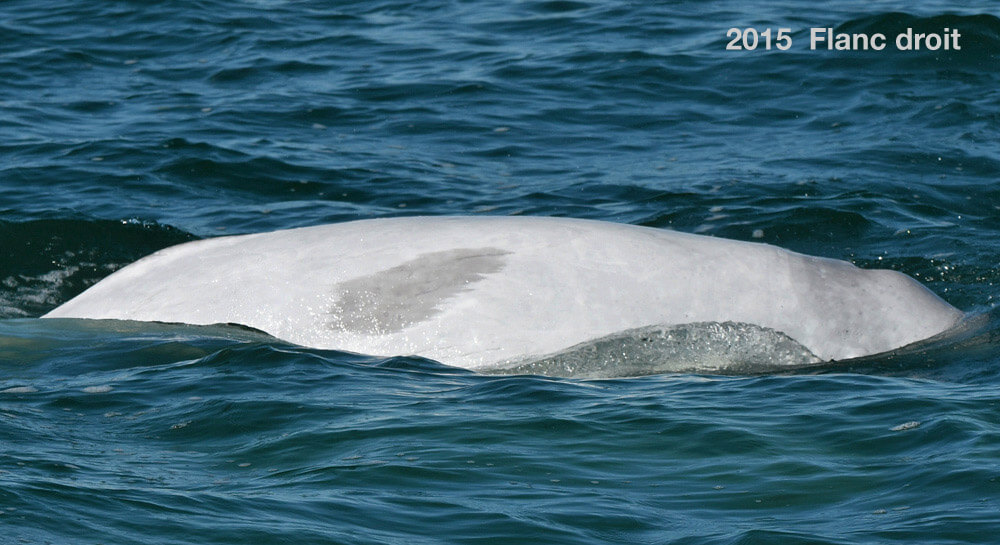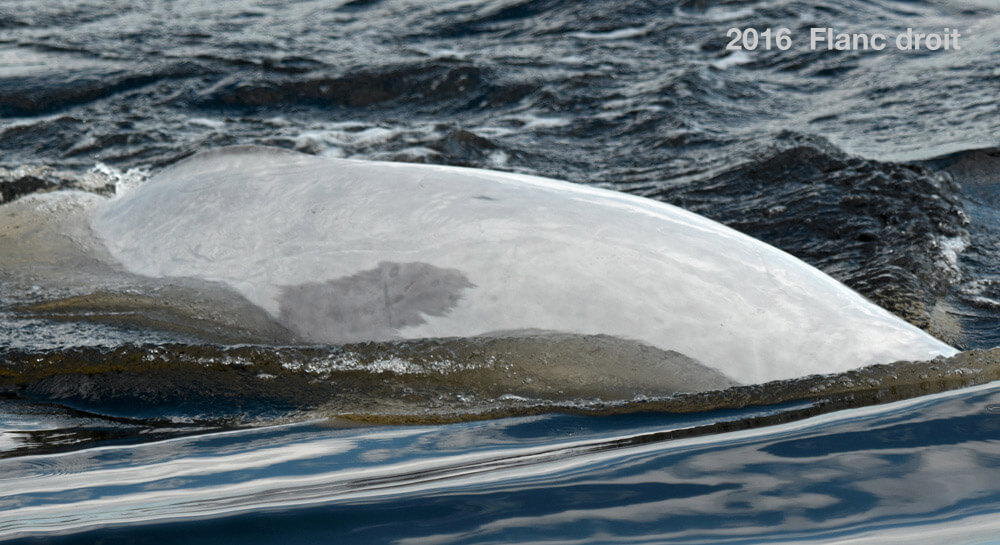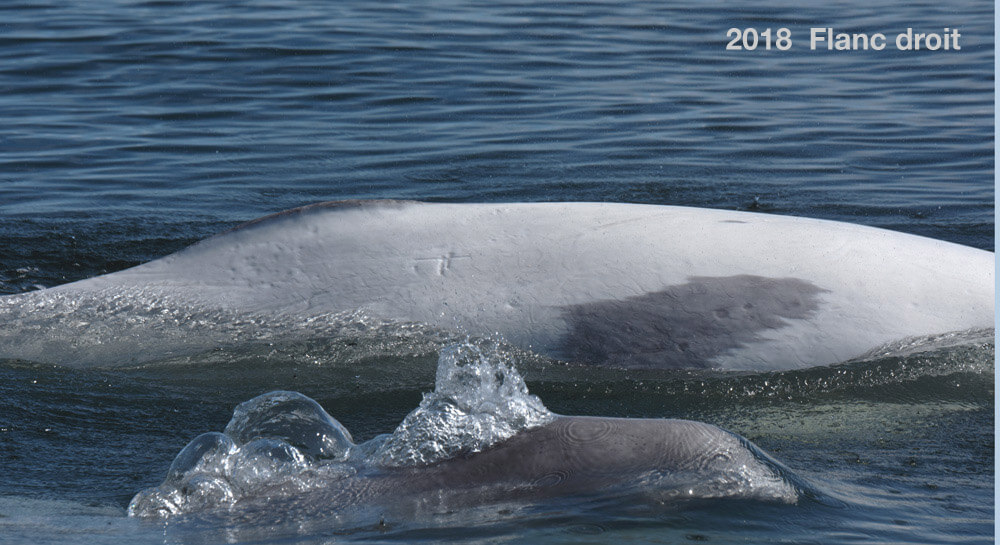UAPAMEKU
Beluga


Adopted by le Prince Jacques de Monaco
-
ID number
DL9068
-
Sex
Unknown
-
Year of birth
Around 2004
-
Known Since
2015
Distinctive traits
From the right flank, Uapameku is easy to recognize. There’s a large gray spot in the middle of the flank, a little closer to the crest than to the vent. This spot resembles the wing of a bird, angel or butterfly. On the same flank, near the crest, there’s another small gray spot.
Life history
Uapameku means “white whale/beluga” in Innu-aimun, the language spoken by the Innu. The word is pronounced : “wapamék”. The name was suggested by the Innu community of Essipit, who live on the Côte-Nord and see belugas pass the rocks every day.
We first met Uapameku in 2015. At the time, its skin was gray. On our next two sightings in 2016 and 2018, its skin color hadn’t faded much. Its coloration therefore tells us that Uapameku is a young beluga, since the transition from gray to white occurs between the ages of 12 and 16. Once Uapameku has turned completely white, we’ll have a better idea of its age.
The sex of this young beluga remains unknown. During the summer, we observe adult males and females in separate groups. The females live in communities with the young, while the males are often found in unisex herds. During our encounters with it we observed Uapameku with both males and females. In the absence of a biopsy, a sample of a tiny piece of fat that we analyze, we can’t confirm its sex.
What will we learn about Uapameku, but also about its species? Over the years, this beluga will develop affiliations and habits of movement. By getting to know it better, we’ll better understand the social development of young belugas.
Observations history in the Estuary
Years in which the animal was not observed Years in which the animal was observed
Latest news
This summer, Uapameku was observed three times.
It’s late afternoon off the coast of Cacouna when we encounter a herd of around thirty belugas from aboard our inflatable research vessel, the BpJAM. Most of them are still grey. There’s action! We can see pectoral fins poking out of the water and flapping tails. One group of grey belugas in particular is making a ruckus. One individual draws our attention with its large dark grey spot: it’s Uapameku! Other groups of belugas join the stampede. The belugas are swimming at full throttle toward a goal that is invisible to us. Northern gannets join in on the game. The belugas seem to be darting toward their meal!
Days like this are a dime a dozen! Off Cacouna, near the south shore of the St. Lawrence, we stop the BpJAM. The waves gently rock our little inflatable, and we take advantage of good visibility to spot the belugas. In fact, there are about fifty of them close to us. The size of the individuals and the shape of their shoulders tell us that we’re in the presence of adults and juveniles, and even males and females.
We can easily identify Uapameku‘s beautiful gray spot. He swims among other youngsters whose skin is still gray. Between all the gray and white backs, we see a small café au lait beluga. A newborn? We try to photograph it, but it disappears among the animals, preventing us from confirming our observation.
It has to be said that the animals are busy on the surface. Tails and pectoral fins pierce the waves. Some belugas even spit out sprays of water. Seabirds dive in and come up with a fish caught in their beak. A few heads rise above the waves to observe us : this behavior is called “spyhopping” in the jargon.
It’s truly an exceptional day. Belugas start to vocalize. Their big melon-shaped heads pop out of the water and their open mouths let out all kinds of sounds. What is it about belugas that causes such a stir? We think we’re witnessing a feast, but we want to confirm it. We launch the drone to get a new perspective of the scene. In a while, when we analyze the videos, maybe we’ll find the answer!
The drone’s battery forces us to land it. Now it’s time to set off in search of more belugas.
Sponsor
Le Prince Jacques de Monaco adopted Uapameku (2019).


